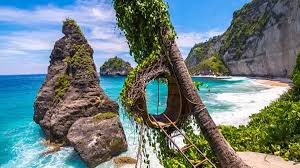
Nestled within the enchanting landscapes of Bali lies a rich tapestry of biodiversity, from lush rainforests teeming with exotic flora and fauna to vibrant coral reefs pulsating with marine life. Yet, this ecological paradise faces threats from habitat loss, pollution, and human encroachment. In response, dedicated conservationists and local communities have rallied together to safeguard Bali’s precious wildlife and habitats. In this exploration, we delve into the wildlife conservation efforts in Bali, uncovering the challenges, successes, and ongoing initiatives aimed at preserving the island’s natural heritage for generations to come.
The Importance of Wildlife Conservation in Bali
Bali’s unique biodiversity is not only a source of natural beauty and wonder but also vital for ecological balance and human well-being. From the majestic Bali starling to the elusive Javan leopard, the island is home to a diverse array of species found nowhere else on Earth. These iconic creatures play critical roles in maintaining healthy ecosystems, regulating populations of pests and diseases, and supporting local livelihoods through ecotourism and sustainable agriculture.
However, Bali’s wildlife faces numerous threats, including habitat destruction, poaching, and climate change. Rapid urbanization and agricultural expansion have led to the loss of vital habitat for many species, pushing them to the brink of extinction. Additionally, illegal wildlife trade and hunting pose significant risks to vulnerable species, threatening their survival and disrupting delicate ecosystems.
In response to these challenges, conservationists, government agencies, and local communities have launched a range of initiatives aimed at protecting Bali’s wildlife and habitats, preserving the island’s natural heritage for future generations to enjoy.
Conservation Success Stories
Despite the daunting challenges, Bali has seen remarkable successes in wildlife conservation efforts in recent years. One notable example is the conservation of the Bali starling, a critically endangered bird endemic to the island. Once on the brink of extinction due to poaching and habitat loss, the Bali starling has been the focus of intensive conservation efforts, including captive breeding programs, habitat restoration, and community engagement initiatives. Today, thanks to these concerted efforts, the population of Bali starlings has increased significantly, offering hope for their long-term survival.
Another success story in Bali’s wildlife conservation efforts is the protection of sea turtles, which nest on the island’s beaches and play a vital role in marine ecosystems. Through community-based conservation programs and awareness campaigns, local organizations have worked to reduce threats to sea turtles, such as poaching and habitat degradation. By involving local communities in conservation efforts and promoting sustainable tourism practices, these initiatives have helped to safeguard nesting sites and ensure the survival of these ancient marine creatures.
Ongoing Conservation Initiatives
While progress has been made, much work remains to be done to ensure the long-term survival of Bali’s wildlife and habitats. Ongoing conservation initiatives focus on a range of strategies, including habitat restoration, species reintroduction, community engagement, and law enforcement.
One such initiative is the Bali Bird Sanctuary, a protected area established to conserve the island’s avian diversity and provide habitat for endangered species. Through habitat restoration efforts and captive breeding programs, the sanctuary aims to bolster populations of threatened bird species, including the Bali starling, while also providing educational opportunities for visitors and local communities.
Another key conservation initiative in Bali is the protection of marine ecosystems and coral reefs, which are vital for the island’s tourism industry and support the livelihoods of thousands of people. Through marine protected areas, sustainable fishing practices, and coral reef restoration projects, conservationists are working to preserve the health and resilience of Bali’s coastal ecosystems, ensuring the survival of diverse marine species and the communities that depend on them.
Challenges and Future Directions
Despite the progress made, Bali’s wildlife conservation efforts face numerous challenges, including funding constraints, inadequate enforcement of conservation laws, and competing interests for land and resources. Additionally, climate change poses a growing threat to the island’s biodiversity, with rising temperatures and sea levels exacerbating habitat loss and disrupting ecosystems.
To address these challenges, conservationists are calling for increased collaboration between government agencies, non-profit organizations, and local communities to develop comprehensive conservation strategies that prioritize the protection of key habitats and species. By integrating traditional ecological knowledge with modern scientific techniques, Bali can develop innovative solutions to safeguard its natural heritage while promoting sustainable development and economic growth.
Furthermore, raising awareness about the importance of wildlife conservation and fostering a culture of environmental stewardship among residents and visitors alike will be crucial for the success of future conservation efforts in Bali. Through education, advocacy, and community engagement, Bali can inspire a new generation of conservation leaders committed to protecting the island’s precious wildlife and habitats for years to come.
Conclusion
Bali’s wildlife conservation efforts stand as a testament to the island’s commitment to preserving its natural heritage and fostering harmony between humans and nature. By working together to address the challenges facing Bali’s biodiversity, we can ensure that future generations inherit a world rich in biodiversity, where wildlife thrives and ecosystems flourish. Through collective action and unwavering dedication, Bali can continue to be a beacon of hope for wildlife conservation, inspiring positive change and nurturing a sustainable future for all.





